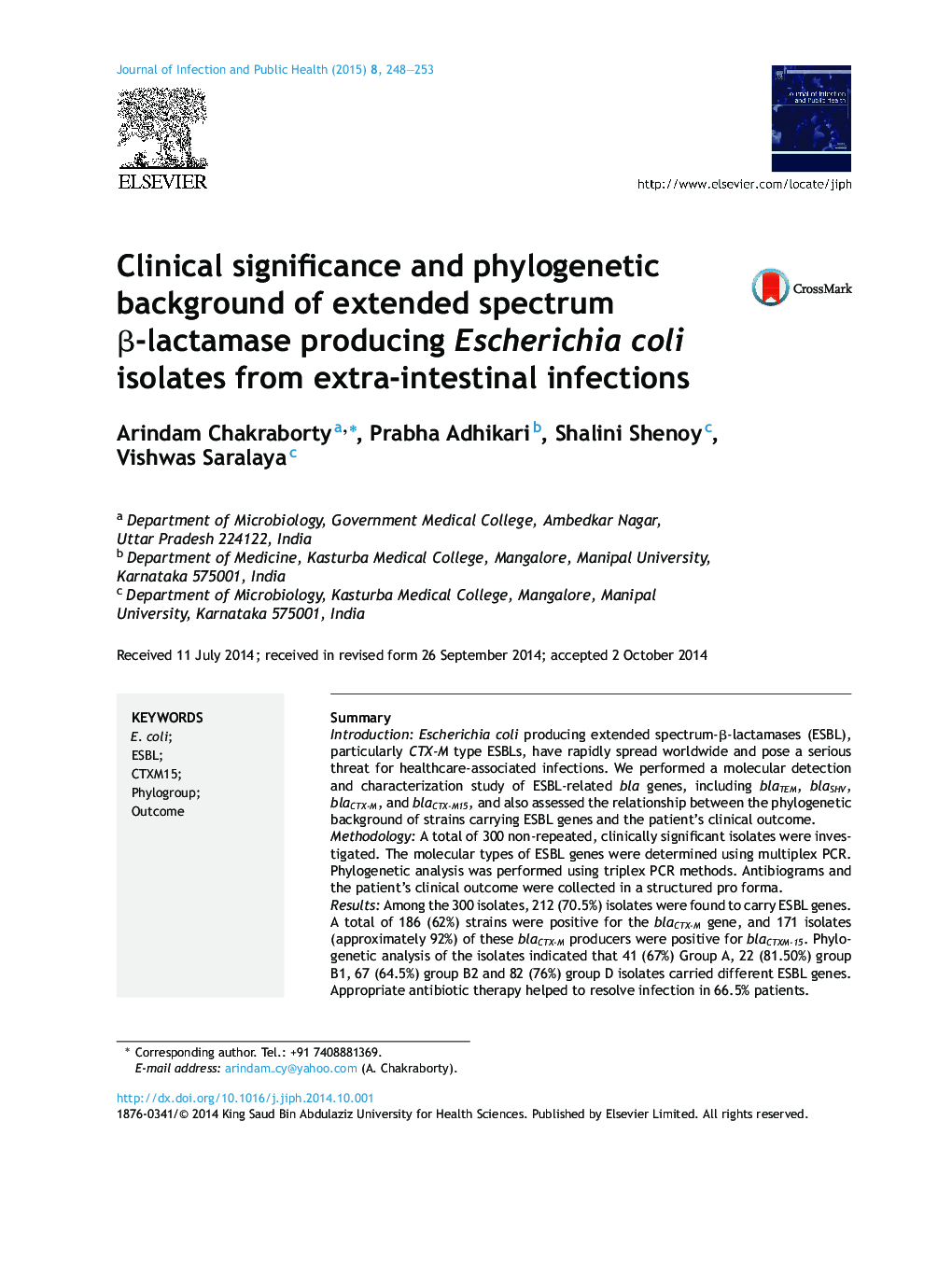| کد مقاله | کد نشریه | سال انتشار | مقاله انگلیسی | نسخه تمام متن |
|---|---|---|---|---|
| 3405979 | 1223493 | 2015 | 6 صفحه PDF | دانلود رایگان |

SummaryIntroductionEscherichia coli producing extended spectrum-β-lactamases (ESBL), particularly CTX-M type ESBLs, have rapidly spread worldwide and pose a serious threat for healthcare-associated infections. We performed a molecular detection and characterization study of ESBL-related bla genes, including blaTEM, blaSHV, blaCTX-M, and blaCTX-M15, and also assessed the relationship between the phylogenetic background of strains carrying ESBL genes and the patient's clinical outcome.MethodologyA total of 300 non-repeated, clinically significant isolates were investigated. The molecular types of ESBL genes were determined using multiplex PCR. Phylogenetic analysis was performed using triplex PCR methods. Antibiograms and the patient's clinical outcome were collected in a structured pro forma.ResultsAmong the 300 isolates, 212 (70.5%) isolates were found to carry ESBL genes. A total of 186 (62%) strains were positive for the blaCTX-M gene, and 171 isolates (approximately 92%) of these blaCTX-M producers were positive for blaCTXM-15. Phylogenetic analysis of the isolates indicated that 41 (67%) Group A, 22 (81.50%) group B1, 67 (64.5%) group B2 and 82 (76%) group D isolates carried different ESBL genes. Appropriate antibiotic therapy helped to resolve infection in 66.5% patients.ConclusionOur study documented the high prevalence of ESBLs in E. coli isolates, with CTX-M-15 as the predominant ESBL gene in the region, and these isolates predominantly belonged to commensal phylo-groups. Thus, an appropriate antibiotic and hospital policy is required to reduce the horizontal spread of ESBL genes among various bacterial strains, whereas in the near future, the spread of ESBL producers may result in therapeutic dead ends.
Journal: Journal of Infection and Public Health - Volume 8, Issue 3, May–June 2015, Pages 248–253